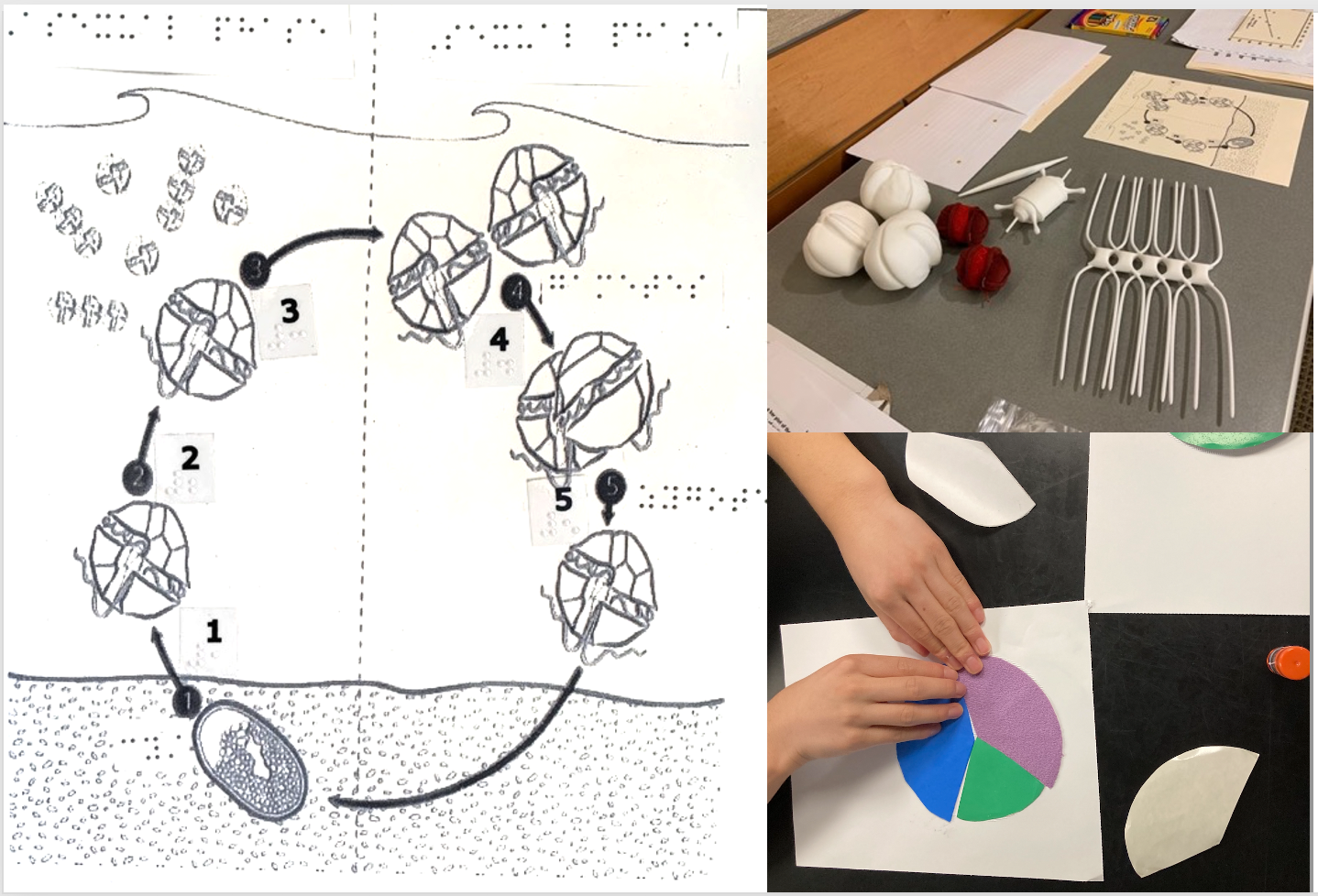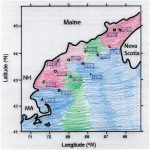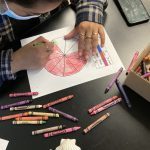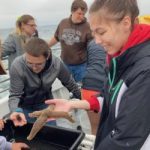Aim 2: Expanding community and classroom education on the causes and impacts of HABs.
The WHCOHH CEC is developing K-12 educational activities about HABs and climate change impacts to cultivate student enthusiasm and understanding of OHH research. Our goal is to develop educational opportunities and model curricula for engaging underrepresented groups in OHH science and STEM. Integrating OHH science into educational curricula provides students with the opportunity to investigate a topic that spans multiple scientific disciplines and that may have relevance to their own community and culture. These activities are based on WHCOHH research, and include materials adaptations and specifications to engage visually impaired students. Although these activities are based on our Center's research, they are intended to serve as model curricula with broader application in the OHH metadiscipline, to help inform similar approaches in other systems.

Activities and Highlights:

Alexandrium cyst dynamics (Curran & Richlen, 2019). In this activity, students learn about the importance of HABs, and how scientists collect and use data to understand and predict blooms. Classroom exercises involve creation of heat maps of the distribution of Alexandrium cysts in the Gulf of Maine. Specifications for tactile teaching aids to engage visually impaired students included 3D printed models of several dinoflagellate and diatom species associated with HABs, and raised-line and/or enlarged drawings and graphs for data interpretation.

Pseudo-nitzschia community structure (Richlen et al. 2022). This activity focuses on Pseudo-nitzschia spp., and how scientists use DNA approaches to study HAB species. In the classroom exercises, students create charts depicting changes in species composition and domoic acid (before and after the introduction of P. australis), and develop hypotheses regarding how the two are linked.

Zephyr Education Foundation - Marine Science and Technology Program. Located in Woods Hole, this innovative marine science education program coordinates school class field trips in which students participate in hands-on learning and discovery. Approximately 1000 students and their teachers participate annually, and the program attracts many underserved groups of students. CEC participation in this program offers the opportunity disseminate OHH educational activities and content, while helping to provide these students with a meaningful educational experience in marine science topics of regional interest and importance.